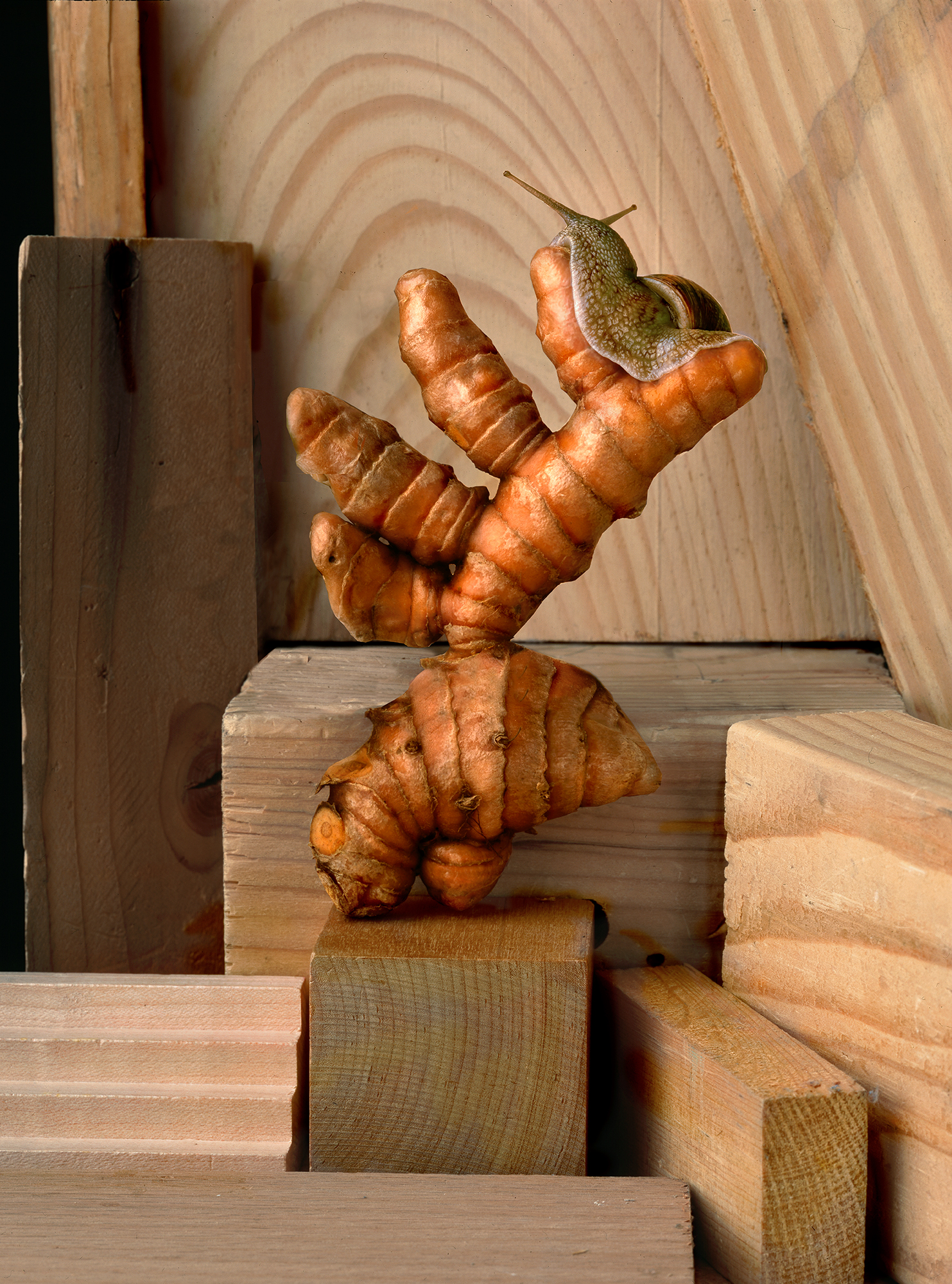ARTIST STATEMENT
This work was influenced by classic era still life painting and my long-term explorations with studio fabrication. In historic Vanitas painting of the Renaissance era, rich, symbolic visual elements were used in still lifes to remind us of our mortality. I found it curious when in this “nature morte” genre, a.k.a. “still life”, something was included in the arrangement that was not dead. The snail was such an element. I imagine it was supposed to represent something that aids in the decay of living matter; or even the slow, inevitable passage of time; or the creeping nature of death; or humility; or perhaps just everyday life. Back then, snails were even symbolic of the Virgin Birth and the dogma of immaculate conception (snails have the ability to change sex to whichever is needed for reproduction). The meaning of many of these ancient metaphors are often quite speculative and obscure.
The fascinating inclusion of snails moving slowly through a still life arrangement led to me to explore this as a theme in my own work. On a trip to France, I visited an escargot farm, picked up some healthy snails, and smuggled them back to Colorado. I raised these snails over a period of years in order to have subjects readily available to photograph.
Over time, I got to know my snail’s markings and individual “personalities”. Some of them would do things others would not. For example, snails are repelled by oil and would never climb an oil can. In the image of the snail mounting the oil can, I put a small piece of a wooden toothpick in the end of the oil spout. This gave my best performer something which it was willing to grab on to in order to make the idea possible. Only one of my snails would do this.
Watching them slowly stretch out of their shells to search their surroundings is like watching a Martha Graham dance performance. They don’t have a sense of vision but they do sense things with the dots at the end of their antenae-like body extensions. I soon realized I could entice and direct them to stretch in certain ways and even to look into the camera by holding a piece of carrot in front of them. They slowly stretched out of their shell towards it. I would tease them with the carrot and when I had directed them where I wanted, I would snap the picture. Still life stages were fabricated for the snails to perform in, hence the series title Cirque.
The public’s reaction to a snail often varies from endearing to revolting. They are seen as cute, idealized creatures in fairy tales and cartoons. Gardeners perceive them as slimy slugs devastating the environment. We can empathize with the snail’s nature to withdraw into its protective shell when life is perceived as threatening (the psychological phrase “coming out” refers to this metaphor). The snail has well established itself as a fascinating creature within the human psyche. It is easy to understand why this life form has such a rich history as a metaphor in the still life tradition.

















